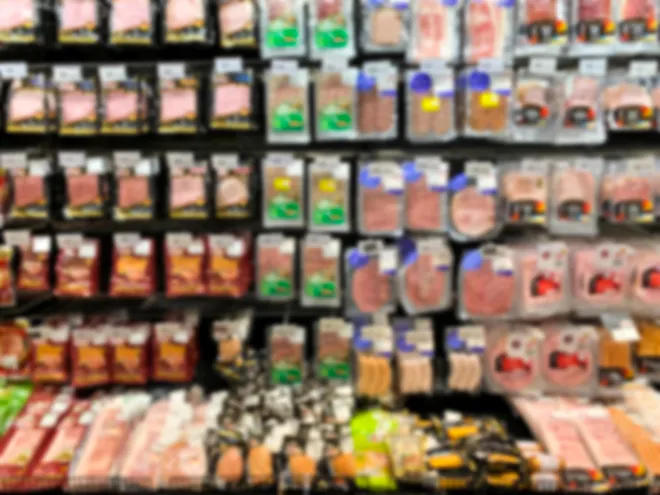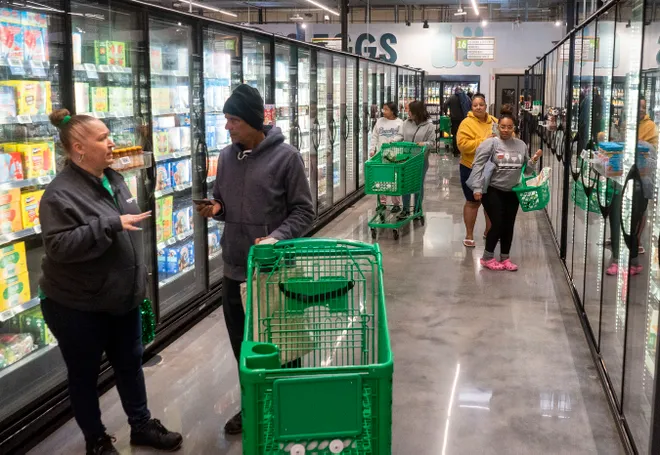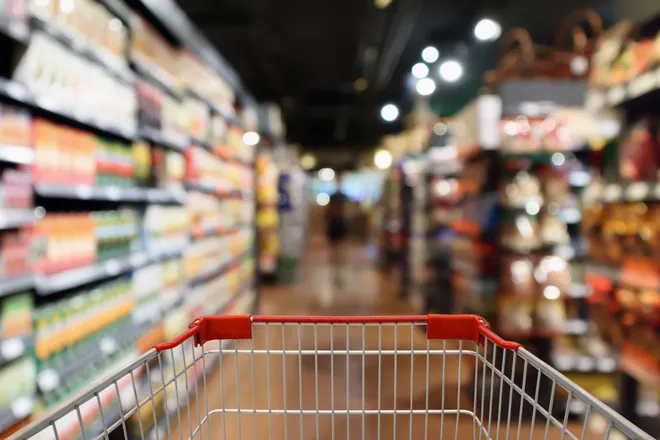Is that cereal box getting smaller? Welcome to the bewildering world of shrinkflation.
Is your breakfast table getting bigger, or is that cereal box getting smaller?
Welcome to the bewildering world of shrinkflation. Rather than raise the price, grocery companies put fewer chips in the bag, or fewer flakes in the box, or less peanut butter in the jar.
Shrinkflation is a retailing strategy that goes back decades, but it has captured the public imagination this year. President Joe Biden said he’d “had enough” of shrinkflation in a February Super Bowl ad. Cookie Monster, the Muppet, went viral in March with a tweet that proclaimed, “Me hate shrinkflation!” And Biden echoed those sentiments, with better grammar, in his State of the Union address.
Recent polls show American consumers are increasingly aware of the practice. And while “hate” might be too strong a word, they are not pleased.
- In a survey published last month by the personal finance site Empower, 79% of consumers opined that “there are less chips/cereal/product in a bag than there used to be.”
- A global survey by YouGov, released earlier this year, found that 72% of U.S. consumers have noticed shrinkflation in food products.
- A third survey, reported in May by the industry publication Chain Store Age, found 81% of American consumers were aware of the shrinkflation trend.
Protect your assets: Best high-yield savings accounts of 2023
“The things that Americans are frustrated with right now are not just high prices. They are also increasingly vexed by how pricing works,” said Lindsay Owens, executive director of the Groundwork Collaborative, a left-leaning think tank.

It's true: Shrinkflation is on the rise
Shrinkflation is indeed on the rise. The Labor Department tracks product “downsizing.” Their data show shrinkflation is more common now than in the peak pandemic years of 2020 and 2021.
But here’s an important caveat: Shrinkflation was at least as common in some pre-pandemic years as it is now.
“There is nothing about the current trend of downsizing or upsizing that is any different than before the pandemic,” said Jai Kedia, a research fellow at the Center for Monetary and Financial Alternatives at the libertarian Cato Institute.
Yes: “upsizing” is also a thing. Grocery companies put more of something in the same package and sell it at the same price, usually with great fanfare. With inflation running high, not much upsizing is happening right now.
The theory behind shrinkflation is that a higher price, more than anything else, is what turns consumers off of a product. Charge a dollar more for the same roll of paper towels, and grocery customers might defect to a cheaper store brand. But if you put fewer paper towels on the roll and charge the same price, the theory goes, most shoppers either won’t notice or won’t care.
“People ultimately pay the most attention to the final price,” said Nailya Ordabayeva, Kelli Questrom Associate Professor in Marketing at Boston University’s Questrom School of Business. “Downsizing is actually less upsetting at face value.”

Can you spot a shrinking product?
A shrinking product should be easy enough to spot. Weights and volumes are usually clearly marked. If a 32-ounce bottle of Gatorade shrinks to 28 ounces, the evidence is right on the label, even if a consumer doesn’t notice the skinnier package.
Savvy customers can also spot the difference in unit price. That’s how much the product costs per ounce or pound or liter. Many grocery stores post unit prices on their shelves. Shrinkflation may not change the product’s price, but it most definitely raises the unit price.
“Really attentive consumers can access that information,” Ordabayeva said. “The issue is that most consumers don’t.”
Some shrinkflation is obvious: Most consumers will probably spot a package that is noticeably shorter or thinner. Food companies can get around that giveaway, Ordabayeva said, by shrinking a package “on all dimensions,” so it looks more or less the same as before. Another trick: Fitting a jar with a concave bottom, so it holds less.
The Biden administration has termed shrinkflation a “corporate rip-off” and pledged to crack down. A 2024 bill from Sen. Bob Casey, the Pennsylvania Democrat, calls for regulating shrinkflation as a deceptive practice.
Economists note, however, that shrinkflation is really just an alternative to raising prices in inflationary times: Either way, consumers wind up paying more.

When do grocery companies turn to shrinkflation?
Food companies typically turn to downsizing when their own costs rise so much that they face a steep price increase, one “that might hurt their sales greatly,” said Metin Çakır, professor and director of graduate studies in applied economics at the University of Minnesota.
If inflation pushes the cost of a jar of peanut butter from $5 to $5.40 or $5.50, Çakır said, consumers might pay the extra sum without much thought. But if the price rises from $5 to $6, sales could slide. Such a scenario, he said, might prompt a food company to put less peanut butter in the jar instead.
Still, Shrinkflation is probably less common than most shoppers think, said Kedia of the Cato Institute. In 2022, when inflation raised prices by 11.8% on food eaten at home, only 0.3 percentage points of that bump came from product downsizing, according to research by Kedia and colleagues.
“We’re being made to focus on this almost as a diversion from the real problem, which is aggregate inflation,” he said, alluding to Biden’s shrinkflation remarks.
More:Supermarket store brands are more popular than ever. Do they taste better?

Owens, of the Groundwork Collaborative, contends that shrinkflation is fundamentally deceptive, and that shoppers have a right to be angry.
“I think, from a consumer’s standpoint, raising the list price is more transparent than shrinking the product,” she said.
In a report titled Big Profits in Small Packages, the think tank accuses food companies of leveraging shrinkflation and other strategies to turn massive profits.
Yet, food companies have been dealing with many of the same price hikes that have vexed their customers. The price of diesel, for example, topped $5 a gallon in 2022 and remains elevated. That affects the truckers who ship groceries to stores.
“All of our costs have skyrocketed,” said Mike Kucharski, co-owner and vice president of JKC Trucking in the Chicago area. “It’s a domino effect.”
Disclaimer: The copyright of this article belongs to the original author. Reposting this article is solely for the purpose of information dissemination and does not constitute any investment advice. If there is any infringement, please contact us immediately. We will make corrections or deletions as necessary. Thank you.







